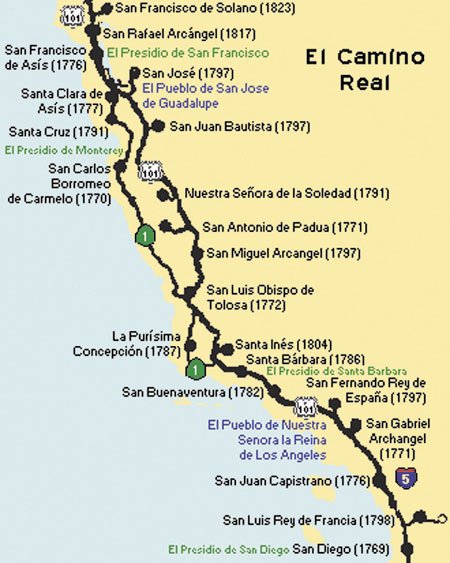Inwardly grumbling about the hassles of modern day traveling, I
slugged my way with hundreds of other passengers through the
security line at Los Angeles International Airport last Sunday. We
all know the drill.
Inwardly grumbling about the hassles of modern day traveling, I slugged my way with hundreds of other passengers through the security line at Los Angeles International Airport last Sunday. We all know the drill. Provide identification and boarding pass to the checkpoint people, take off shoes, put shoes, keys, wallet and carry-on bags through the X-ray machine, kill time amidst chaos and clamor of the passenger waiting areas.
Once my American Airlines flight rocketed down the runway and lofted toward blue sky, I relaxed back in my seat knowing that in 57 minutes my fellow passengers and I would be landing in San Jose. Cruising at 30,000 feet as the plane followed California’s coast range, I sat in air-conditioned comfort and gazed at the patchwork of agricultural fields and communities below. From my sky-high perspective, I peered down at the thread of Highway 101 stretching from north to south and made out the specks of vehicles traversing it.
Then it hit me how spoiled modern day travelers are. Much of Highway 101 between L.A. and San Jose closely follows the route of the historic El Camino Real – “the Royal Road” developed by the Franciscan padres during the Spanish rule of California. They established it in 1769 as a footpath and over the decades of construction of California’s 21 missions, it evolved to become a 600-mile route that connected the line of these religious settlements spaced one-day’s journey apart from each other.
Sipping a cranberry juice beverage as I followed tiny vehicles on Highway 101 from my window seat, I considered how the hassles of modern day trips are nothing compared to the dangers and hardships people who journeyed along El Camino Real 200 years ago were forced to face. Today’s car passengers can speed along asphalt and concrete and get from San Diego, the most southern mission in California, to Sonoma, the most northern mission in less than 10 hours. In the early decades of the 19th century, most travelers would have taken at least a month to make the journey by riding horseback or walking.
Today’s Highway 101 travelers can enjoy their stereo system or DVD player to make the time go by quickly. Back two centuries ago, El Camino Real travelers had no such electronic luxuries and made the hours pass with conversation or story-telling. Today’s travelers can stop at a fast-food restaurant located off exit ramps. El Camino Real travelers had to carry food and water for a day’s journey, occasionally finding creeks or obtaining food from missionaries. They also faced mud after winter or spring rains or dust after the heat of summer and fall.
Although we’d consider it a primitive trail compared with today’s grand ribbons of roads that network through the Golden State, El Camino Real was really California’s first highway system. In fact, it’s sometimes called “the King’s Highway.” Our own South Valley region is a part of its colorful history. The Mission San Juan Bautista has preserved an unpaved section of the original road on the east side of the church to give visitors an idea what El Camino Real might have been like in the days of the padres. And Monterey Road that cuts through Gilroy, San Martin and Morgan Hill essentially overlaps El Camino Real’s route. El Camino Real helped shaped the communities of the South Valley.
As the flight I was on started to descend as it made its final approach to San Jose’s airport, I looked down at the traffic along Highway 101 passing through Gilroy and Morgan Hill. The flow of vehicles on both north and south lanes was steady without any backups. Travelers were on the move.
I imagined that if the Franciscan padres from California’s long-ago past could stand by the side of Highway 101 and feel the slap of wind from the passing cars and big-rig trucks, they would be astonished by the speed and complexity of our modern day highway system. And if they heard the roar of the airplane I was flying in and gazed up, I’m sure they would make the sign of the cross at the sight of the winged machine that journeyed in less than one hour the distance that would have taken El Camino Real travelers several weeks.
Considering the pioneer conditions of El Camino Real helps puts into perspective the luxurious travel we in the 21st century world enjoy. Modern folks whine about rising fuel prices for our cars and trucks and the minor irritations of getting through airports. But compared with the arduous journeys along California’s original Royal Road two centuries ago, our minor trip annoyances are nothing to gripe about.













